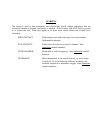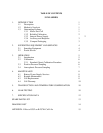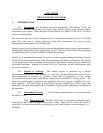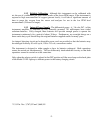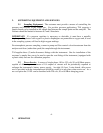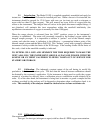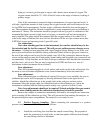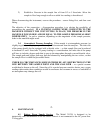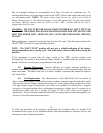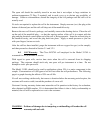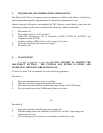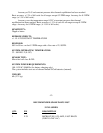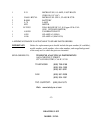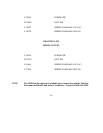
that an overnight recharge be accomplished every three (3) weeks of continuous use. To
recharge the batteries, place the range switch in the “OFF” position and connect the power cord
to a convenient outlet. NOTE: The amber charge lamp (on the rear of the case) will be lit
during charging process. The integral charging circuit will automatically energize and regulate
the battery charging current when the switch is in the “OFF” position and the AC cord is
plugged into the power line.
WARNING: DO NOT TURN THE RANGE SWITCH EITHER TO “BATT TEST” OR
TO ANY OF THE OPERATING RANGE POSITIONS WHILE THE UNIT IS PLUGGED
INTO THE POWER LINE! DOING SO MAY CAUSE THE INTEGRATED CIRCUITS
TO FAIL.
When recharging is completed, unplug the unit from the AC outlet. Turn the range switch to the
“BATT TEST” position or to any operating position.
NOTE: The “BATT TEST” position will not give a reliable indication of the battery
charge immediately after a charge cycle. Allow the unit to run for awhile before testing the
batteries.
If the instrument is stored with the range switch in the “OFF” position (charge cord
disconnected), the period of time between charge periods is extended from one month to four
months. However, do not leave it longer than this time period.
4.2 Routine Maintenance. Beyond adhering to a battery recharge schedule, no
routine maintenance is required, as there are no moving parts in the instrument other than the
meter movement. The Micro-Fuel Cell is a sealed, modular component that should be replaced
only when faulty.
4.3 Cell Replacement. The characteristics of the Micro-Fuel Cell are similar to
those of a mercury battery in that both provide an almost constant output through their useful
life, and then fall off sharply towards zero at the end. If the sample being analyzed has a low
(0-2 ppm range) oxygen concentration, cell failure will probably be indicated by a sluggish
recovery to low ppm readings after a calibration (exposure to a higher level of oxygen) or an
elevated zero offset level (i.e. a reading >1/2 ppm @ 25
o
C or less when a zero sample is
introduced). The cell should be replaced when this recovering time becomes unacceptable (see
Section 5.4 for cell replacement instructions).
-8-
To offset the possibility of not having a replacement cell available when it is needed, TAI
recommends that a spare cell be purchased shortly after the instrument is placed in service, and
each time the cell is replaced thereafter.



